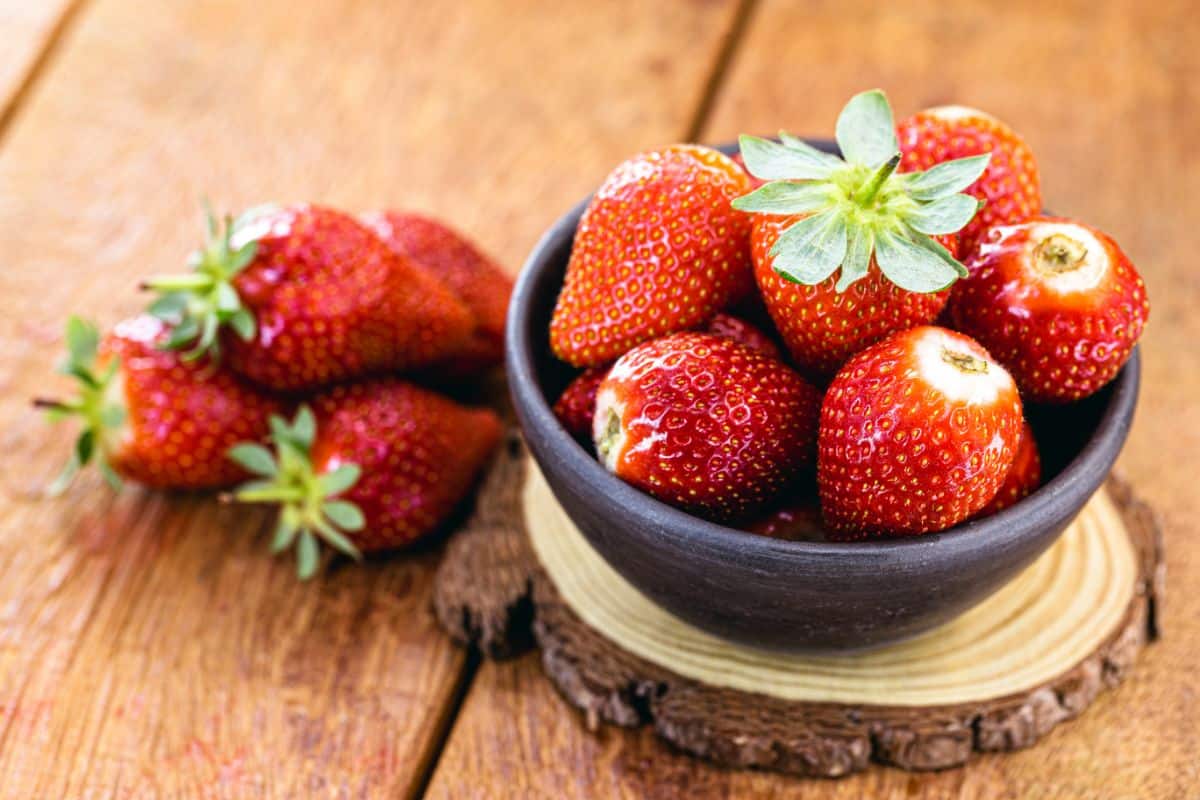
Albion strawberries are a recently developed variety from California. Plants produce large, conical berries throughout the season. They are everbearing and will hold up especially well in long, hot summers while enduring and producing until late in the fall. Albion is a popular variety for home gardeners due to the bounty of red flavorful berries and its ease of care and growth.
Jump to:
Introduction
| Hardiness Zone | Zones 4-7 |
| Exposure | Full Sun |
| Harvest | May – October, 12-14 weeks after planting bare root plants |
| Soil | Ideal pH 6.5 – 6.8, keep moist and well drained |
| Water | Water well |
| Maintenance | Space far apart, fertilize well |
| Plant Type | Day Neutral |
| Berry Flavor | Sweet when fully ripened |
| Berry Size | Large |
History
Albion strawberries were first introduced in 2006. It is a hybrid variety bred in California with the lineage Diamante and Cal 94.16-1.
Where to Grow
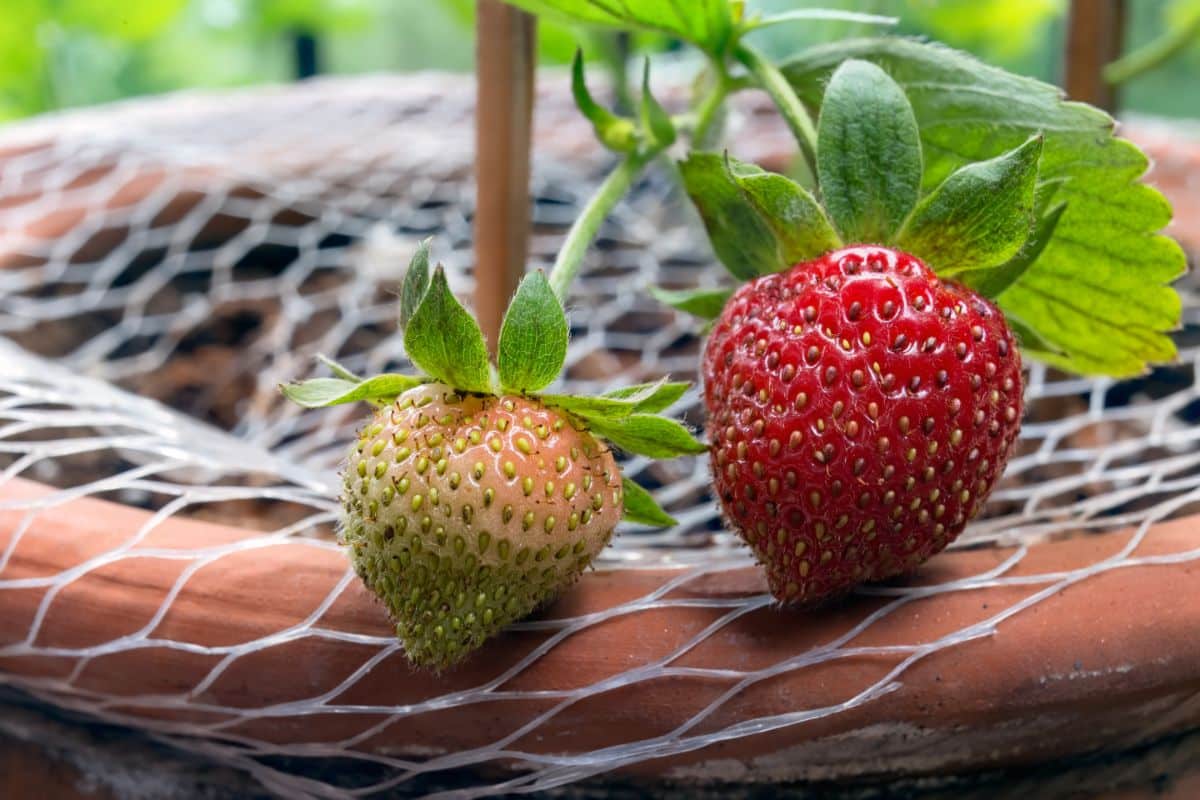
Although they are hardy and can be grown as perennials up to zone 4, Albion will also thrive in much hotter climates. This variety will live life as an evergreen in humid frost free areas.
Growing Conditions
Provide Albion strawberries with full sun and rich well-drained soil and you will be rewarded with high yields of tasty fruit. They are extremely heat tolerant and will continue to produce large juicy berries as long as they are well watered. Harvest ripe berries consistently to make space and energy for the other flowers and fruit on the plant. Keep beds well weeded, fed (add compost or fertilizer) and apply mulch to suppress weeds and retain moisture.
Disease Resistance
Albion are bred to be resistant to verticillium wilt, phytophthora crown rot and anthracnose.
Disease Susceptibility
No specific disease is known to affect Albion plants or berries.
Notable Features
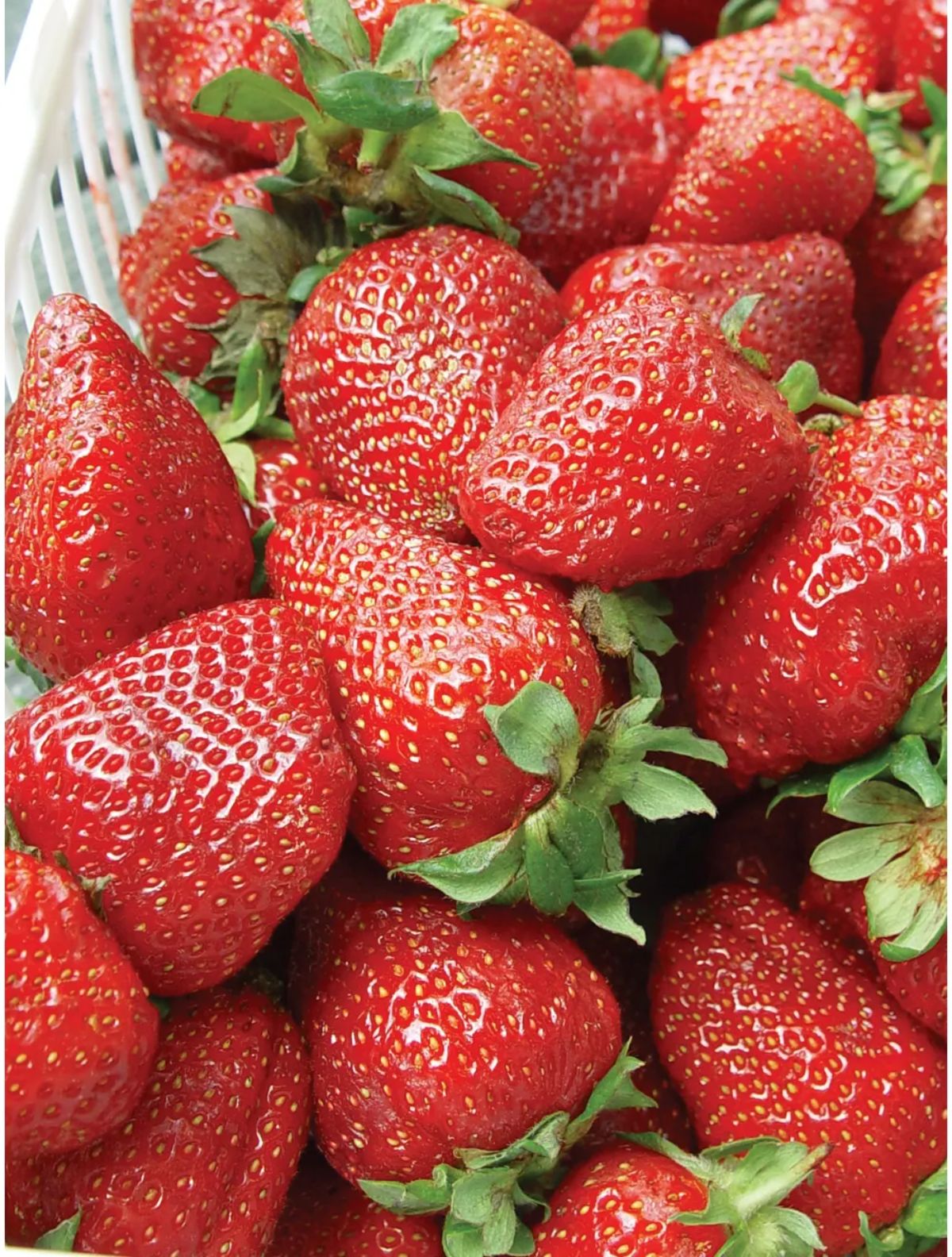
Albion are fast growers. They are everbearing and will produce throughout the season, even during times of excessive heat. Berries are firm, symmetrical and conical in shape.
Growing tips
Give plants more spacing than other varieties. Make sure they’re well watered and receive extra treatment when it comes time to fertilize. The additional care will result in an abundance of large sweet berries. Beds of everbearing varieties will last one to two years, do not attempt to renovate.
Where to Buy
Plants:
- Amazon – 25 Bare Root Plants
- Burpee – 25 Bare Root Plants
- Etsy- 25 Bare Root Plants
- Johhny’s Seeds – 25 Bare Root Plants
- Gurneys – Albion Everbearing Strawberry Plant
Seeds:
Best Uses
These berries are delicious eaten fresh. But because of their size and good flavor, they are also great for canning preserves and jams, baking and freezing

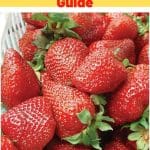

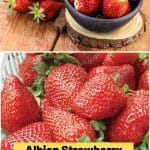

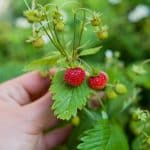

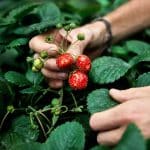
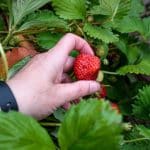
Lidia says
Hello, are Albion a climbing variety ? Richter Herbs in Canada is selling “Fragaria ‘Albion’X6085” as a climbing strawberry , unless the variety is not the same as Albion Fragaria annanassa ?
Thank you kindly
Mary Ward says
To our knowledge, no, Albion are not climbing strawberries. The ‘X6058′ in the name makes me think that the developer has crossed the plant with something else to make it “climb”. Or, perhaps selected for that features for a long time and trialed several prospective plants. Perhaps by selecting Albions that sent a lot of long runners.
“Climbing’ strawberries are basically varieties that send long runners, and the runners are then trained to a trellis, support, or other system.
Christopher J Roark says
I planted my strawberries in Late November in a raise bed. When should I expect to harvest?
Mary Ward says
You should start seeing berries in June. This can be earlier for warmer climates.
Joyce Finn says
I’ve never grown strawberries before. I have a dumb question: are strawberries annuals? I should know this since I grew up just a few miles from one of the biggest strawberry producers in the world.
Thank you
Mary Ward says
NO, they are not annuals. Strawberries are perennials. A well maintained patch should last you three to five years before it needs replenishing.
Not to confuse things, but some large growers will treat strawberries as annuals or as a sort of bi-annual field, so it is possible you’ve seen that, but home growers get the most bang for their buck by growing strawberries as perennials and focusing on simple but good maintenance.
Elaine Field says
I planted bareroot Albion berries in my raised garden bed in November.
I see now that I was misled that Albion strawberries grow well in Central Florida. I am zone 10A.
Now in January the leaves are lush and they look very healthy and are putting out many runners. In fact so many runners, I was thinking of transplanting the larger ones since the bed is getting congested.
Do you have any information as to what might happen come spring and summer?
I did think it was odd that upon planting the bareroot plants, in a few weeks with about 3-4 small leaves, many flowers began to appear. I promptly removed the flowers to let the plant further develop.
I plan to let this play out with hopes that it will re-flower in our spring….right now our temperatures are in 40-70’s. March will be consistently warmer.
Barbara says
Hello!
Will Albion do well in South-Central Wisconsin? I plan to grow them in a box in full sun. Will I need to replace them every year?
Thanks!
Mary Ward says
Hi Barbara.
Albion grows well in zones 4 through 7. I assume you are n a zone 5, so yes, they should do well for you. Since they are going to be grown in a box, you might need to give them a little more winter protection to protect the roots from winter kill (because they’ll be colder in the box than in the ground. If you can bring the box into a cool/unheated garage or basement, that will help. There’s a decent chance that they will survive even in the boxes outside. In that case, you should not have to replace them every year, but if they seem to start producing less, in a few years, you might want to refresh them.